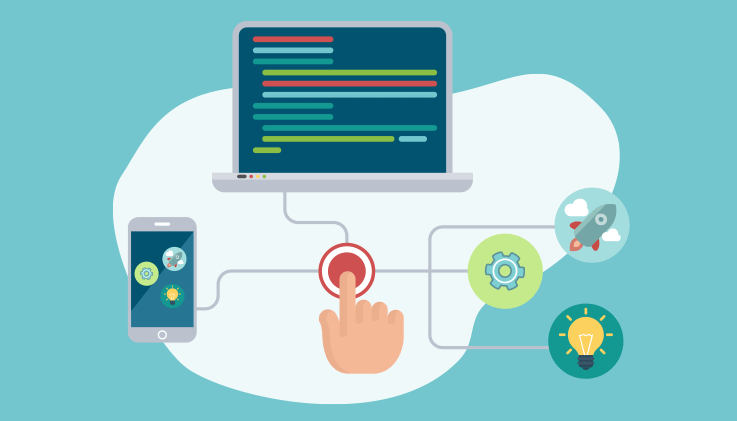Ideas lead to innovation, and innovation leads to growth. An idea can change how we see the world and make it a better place to live in. The introduction of low-code and no-code platforms opened the world of business process automation to everyone who is not a professional developer.
Low-code implies using very little programming to develop business workflows. Here, some coding is required for the sake of customizing or integrating with other applications.
"No-code" implies not using any traditional coding at all. The process owners here do not have to know how to code. Instead, they can automate any business workflows using pre-configured visual elements and drag-and-drop features.
Simply put, with low-code and no-code platforms, developers do not have to build an application from scratch. Low-code and no-code platforms are generally marketed towards customers who are traditionally not from a software background.
How do low-code and no-code platforms work?
With low-code and no-code platforms, process owners use a simple decision-making structure (similar to a flowchart) to design automated workflows that are used across multiple departments in an organization.
Although not a major drawback, low-code, and no-code platforms do not offer in-depth customization of the applications. Workflow management systems, conversation bots, and virtual assistants are just some of the examples of applications created on no-code or low-code platforms.
That brings us to an interesting question. Can organizations completely do away with their in-house software teams after shifting to a low-code or no-code platform? The answer is no.
Low-code/no-code software requires a certain amount of intervention from the IT department and the original low-code/no-code platform developer for maintenance, scaling, integration, and governance of the applications. It is more visible when the applications make contact with critical enterprise-wide systems that have a critical role to play in service delivery.
Take a look at the features of low-code/no-code platforms.
- Advanced toolbox
- Testing environment
- Cross-platform accessibility
- Secure and scalable
- Analytics and reporting
- Enhanced application lifecycle management
Who benefits from low-code, no-code applications?
Low-code or no-code platforms are suitable for small and medium businesses (SMBs). It is reusable, as the same elements can be used to design process flows across various departments within the same organization. Due to their fast deployability, applications built using low-code or no-code technology typically reduce the workload of an “overseer.”
For example, some businesses use low-code or no-code applications to develop sites for mobile and web. Organizations that provide website design and hosting services offer low-code tools that monitor analytics, and help with SEO, digital marketing, and web personalization, among others.
Some advantages of low-code and no-code software are listed below.
- Less dependency on programmers and tech specialists
- Easy automation of business processes
- Decreased operating costs
- Adapt to changing business demands
Low-code, no-code technology increases organizational efficiency. It is often used for the simple reason that it saves time.
Lauded for being tailored to business requirements and allowing quick deployment, most low-code/no-code platforms make app design and development possible in-house.
According to the Harvard Business Review, a low-code or no-code platform helps users develop individual or departmental systems in a few minutes. Such software often features point-and-click or drag-and-drop interfaces. The platform may also include a search interface, which in turn connects users to a knowledge base.
Practice diligence
Since it is possible to execute high-level changes in workflow and business processes by an individual with low-code or no-code applications, it is advisable to have a management-level oversight to control the overall process and prevent abrupt changes in workflow. Proper documentation and DevOps can ensure the smooth functioning of the entire business process.
Non-professional developers, also known as “citizen developers,” can enter a development zone that was earlier reserved only for programmers or coders. Today, citizen developers can permeate areas like creating UI and providing appropriate UX.
Citizen developers can develop mobile functionality, analytics, and customizations, which can be aided by a single professional software developer. The turnaround time for these can be lowered dramatically, as application development and related information are accessible to everyone.
Anything ranging from process design to development is now faster, easier, and gets the job done—no matter what coding skills process owners have. Thanks to low-code and no-code tools. You can easily streamline your customer journeys and transform your business by enabling end-to-end automation.
To explore more, feel free to sign up for a 30-day free trial.













